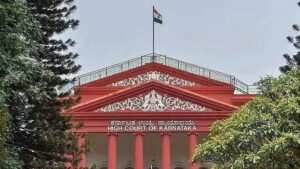For countless international students, pursuing higher education in the United States represents a dream of opportunity, a chance to access world-class institutions and build a foundation for a global career. Many, like a 24-year-old Indian student who borrowed ₹40 lakh to study at a U.S. university, invest their life savings and take on significant debt to chase this dream. However, a recent wave of visa revocations and Student and Exchange Visitor Information System (SEVIS) terminations under the current U.S. administration has turned this dream into a nightmare for thousands. Left with massive loans, no degree, and shattered aspirations, students are grappling with the fallout of an aggressive immigration crackdown. This blog explores the plight of these students, the mechanisms behind the SEVIS terminations, the broader policy context, and the devastating consequences for individuals and the global education landscape.
The Case of a Dream Deferred
Consider the story of a 24-year-old from Hyderabad, India, whose journey encapsulates the crisis. With a promising academic record, he secured admission to a U.S. university in 2023, borrowing ₹40 lakh (approximately $48,000 USD) to cover tuition and living expenses. His family, pooling their savings and taking out loans, saw this as an investment in a brighter future. Yet, in March 2025, his SEVIS record was terminated without warning, and his F-1 visa was revoked. The reason? A minor traffic violation from two years prior, flagged by an automated screening system. Unable to continue his studies or work legally, he returned to India, facing a ₹40 lakh debt, no degree, and no clear path forward. His story, shared widely on social media, is just one of many, highlighting the profound personal and financial toll of the U.S. visa crackdown.
Since early 2025, over 1,800 international students, with estimates as high as 4,700, have faced similar fates, with nearly 50% being Indian nationals. The revocations, driven by the Department of Homeland Security (DHS) and Immigration and Customs Enforcement (ICE), have targeted students for reasons ranging from minor legal infractions to alleged political activism, often with little transparency or opportunity for appeal. The impact is not just academic; it’s a “whole life” disruption, as one affected student noted, affecting credit scores, job prospects, and mental health.
The Mechanism of the Crackdown
The SEVIS system, managed by ICE under the Student and Exchange Visitor Program (SEVP), is designed to track international students’ compliance with visa regulations, such as maintaining full-time enrollment. Historically, SEVIS terminations were initiated by designated school officials for clear violations. However, since March 2025, the administration has employed automated screenings against databases like the FBI’s National Crime Information Center (NCIC), flagging students for issues as minor as speeding tickets or dismissed charges. In some cases, participation in campus protests, particularly pro-Palestinian demonstrations, has been cited as grounds for revocation, raising concerns about free speech violations.
The process is often opaque. Many students, like the Hyderabad native, receive no direct notification from ICE, learning of their status through university checks or inaccessible SEVIS accounts. Only 57% of affected students receive direct notice, often via abrupt emails from consulates. The State Department typically revokes visas first, citing “derogatory information” or “adverse foreign policy consequences,” followed by ICE’s directive to leave the country or face detention. This lack of due process has left students and universities struggling to respond, with some, like a Chinese graduate at MIT, unable to complete degrees just weeks from graduation.
The Financial and Emotional Toll
The financial consequences are staggering. International students often borrow heavily to study in the U.S., where tuition at top universities can exceed $60,000 annually. For the Hyderabad student, the ₹40 lakh loan now looms as an unpayable burden, with monthly interest payments consuming his family’s income. Similar stories abound: a Reddit user described losing OPT work authorization after a visa revocation, leaving them with $50,000 in debt and no job. The inability to recover tuition costs, coupled with lost job opportunities, has driven some students to despair, with reports of increased anxiety and feelings of isolation.
The emotional toll is equally severe. Students face not only the loss of their academic dreams but also the stigma of returning home without a degree. For many, like the Hyderabad student, the pressure to repay loans while navigating unemployment in India is overwhelming. Social media platforms are rife with accounts of students feeling “trapped” and “betrayed” by a system they trusted. The targeting of students for political activism, such as pro-Palestinian protests, has also sparked accusations of selective enforcement, further eroding trust in U.S. institutions.
Legal Pushback and Temporary Relief
The scale of the crackdown has prompted significant legal resistance. Federal judges in states like Georgia, Massachusetts, and Wisconsin have issued Temporary Restraining Orders (TROs) to restore SEVIS records, arguing that many terminations violate federal regulations requiring convictions for violent crimes. In late April 2025, the Justice Department announced a temporary restoration of thousands of SEVIS records, acknowledging procedural flaws. However, ICE retains the authority to re-terminate statuses under a new policy framework, leaving students in limbo.
The American Immigration Lawyers Association (AILA) has documented 327 cases, with half involving Indian students, and is advocating for greater transparency and appeal mechanisms. Universities, caught off guard, have struggled to support affected students. For instance, the University of Louisville reported SEVIS terminations for three OPT graduates, with no prior notice to the institution. These legal battles highlight a critical tension between national security concerns and the rights of international students, with advocates arguing that the current process punishes minor infractions disproportionately.
The Broader Policy Context
The SEVIS terminations are part of a broader immigration crackdown launched in January 2025, which includes plans for mass deportations and tightened visa regulations, such as changes to H-1B norms and proposals to eliminate birthright citizenship. The Optional Practical Training (OPT) program, which employs around 242,000 graduates, faces existential threats from legislative efforts like the Fairness for High-Skilled Americans Act of 2025, which seeks to abolish it, arguing it undermines American workers. Critics, however, emphasize OPT’s role in filling skilled-labor gaps in STEM fields, where international students, particularly from India, play a critical role.
The administration’s focus on “national security” has also led to scrutiny of universities, with institutions like Harvard facing threats of SEVP decertification over diversity programs and foreign funding disclosures. This reflects a broader ideological push to align academia with the administration’s priorities, raising concerns about academic freedom and the politicization of education.
Economic and Global Implications
International students contribute over $50 billion annually to the U.S. economy, with Indian students, numbering 331,000 in 2023-2024, being a significant driver. The visa crackdown risks deterring future applicants, as evidenced by a 30% drop in U.S. college applications from Indian students in 2025. Countries like Canada, Australia, and the UK, despite their own visa restrictions, are poised to benefit, offering more stable post-study work options. Canada’s decision to end its Student Direct Stream and Australia’s enrollment cap of 270,000 for 2025 signal a global tightening of education migration, but these nations remain attractive alternatives.
For India, the crisis presents both challenges and opportunities. The financial burden on students like the Hyderabad native underscores the need for stronger domestic higher education options. Institutions like the Indian Institutes of Technology (IITs) and Indian Institutes of Management (IIMs) are globally competitive, and with simpler visa processes, India could emerge as a hub for international students from Asia and Africa. However, the immediate impact on U.S.-India relations is concerning, as Indian students have been a cornerstone of bilateral academic and cultural exchange.
A Call for Reform
The SEVIS nightmare demands urgent reform. Advocacy groups like AILA and the National Association of Foreign Student Advisors (NAFSA) are pushing for clear guidelines, robust due process, and protections against arbitrary terminations. The temporary restoration of SEVIS records is a step forward, but addressing underlying visa revocations is critical to prevent further harm. Universities must also improve communication, ensuring students are informed of status changes and supported through legal challenges.
For students, alternative pathways like the EB-5 Immigrant Investor Program, which offers permanent residency through a $800,000 investment, are gaining traction, though they are inaccessible to most. Meanwhile, the global education landscape is shifting, with countries like Germany and Ireland offering affordable, high-quality education and clearer career pathways.
Conclusion: Restoring the American Dream
The story of the Hyderabad student and thousands like him is a stark reminder of the human cost of the U.S. visa crackdown. With ₹40 lakh loans and no degree, these students face a future of financial ruin and shattered dreams. The U.S. must balance its security concerns with its role as a global education leader, ensuring that programs like OPT and F-1 visas remain viable pathways for talent. As legal battles continue and the international student community grapples with uncertainty, the hope is for a resolution that restores trust and upholds the values that have made American higher education a beacon for the world. For now, students like the one from Hyderabad are left to navigate a broken system, their stories a call to action for fairness and reform.
Sponsored
FACTS Transcripts
Apply for a University document anywhere
https://www.factstranscript.com
Quick Transcripts for popular Universities, check your University name now and get started. We help you to get your transcript application online which is accepted for use of IRCC.
No DD, NO Paperwork. 100% Authentic, Reliable.
FACTS Transcripts Charges · Reviews · Assam Universities · Home · Know your University









